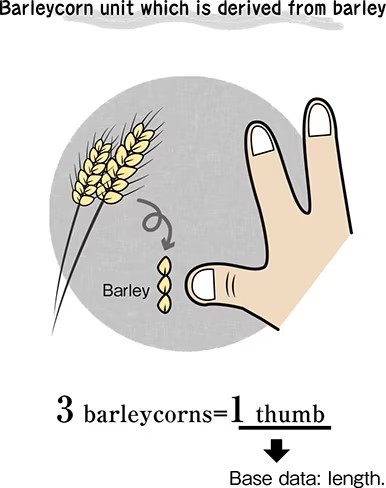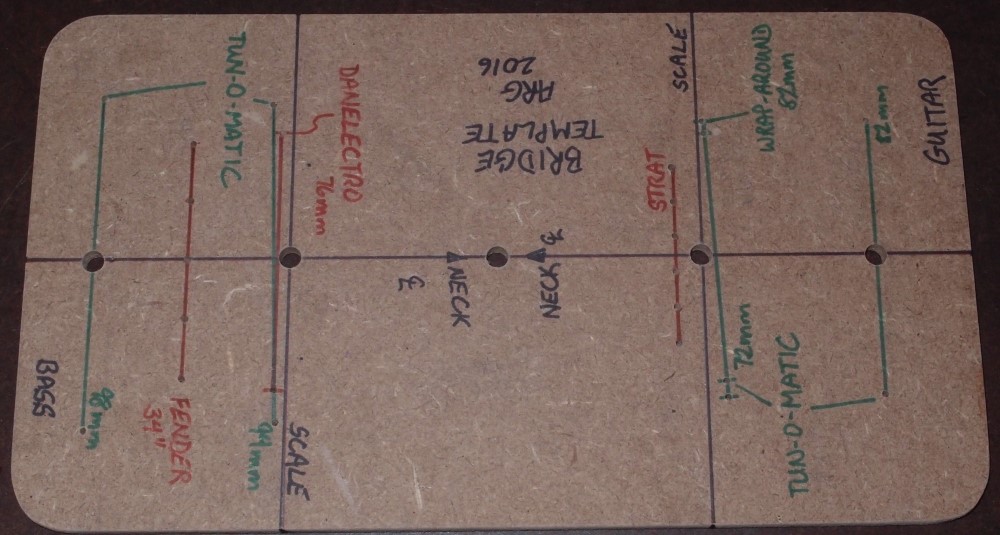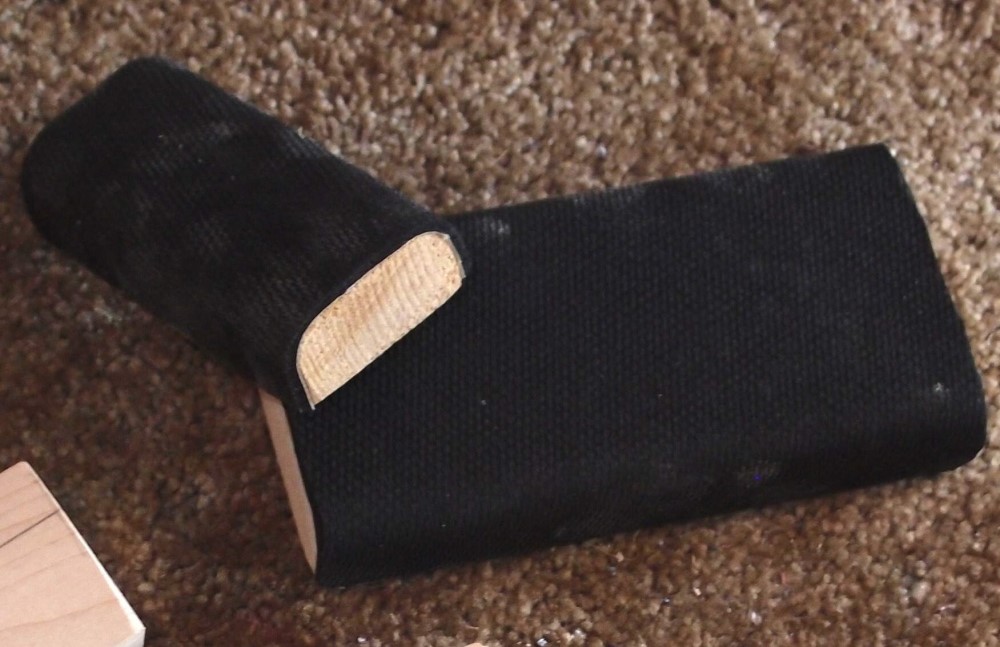Fret Slotting Jig (3/3)
Here is a spreadsheet of fret positions, mainly Fender, but others also:
StewMac has an online fret position calculator: https://www.stewmac.com/FretCalculator
The mathematical formula is:

where
- x = fret distance from inside of nut
- S = scale length
- n = fret number ( 0 = nut, 12 = octave )
I actually used a caliper accurate to thousandths of an inch to mark the locations, and pre-punched them with a new sharp punch prior to drilling. I probably got an accuracy of under 1/100", which is fine for a fretted instrument on which all tuning is approximate anyway.
Two spots you can know with good accuracy are the nut ( 0" ) and the octave ( 1/2 scale length ). Working in both directions from those datums, you can cover almost the entire neck with direct measurements using a 6" caliper.
All these measurements are typically done in inches, but there is no reason you could not use millimeters or barleycorns or cubits or any other silly system.



Questions or Inquiries?
Just want to say Hello? Sign the .